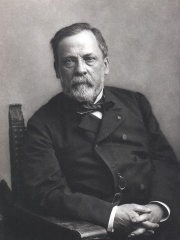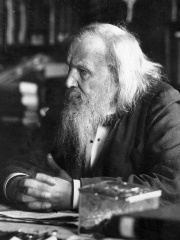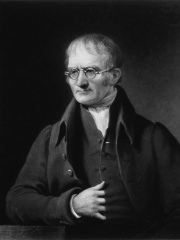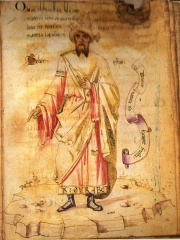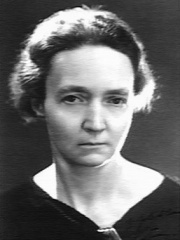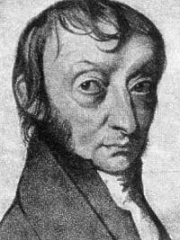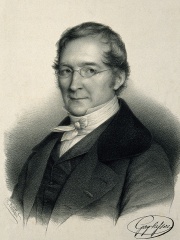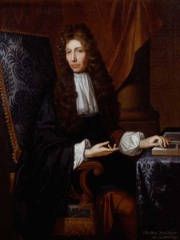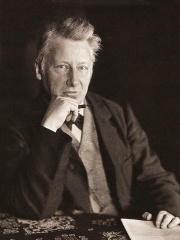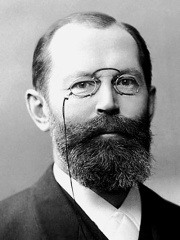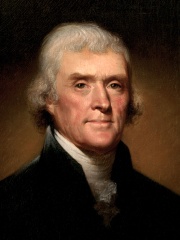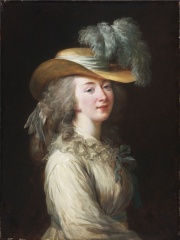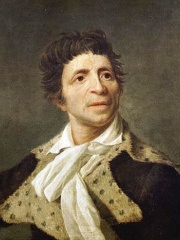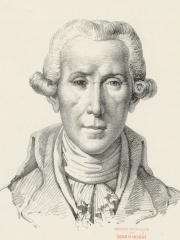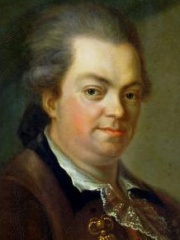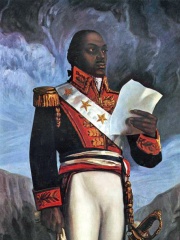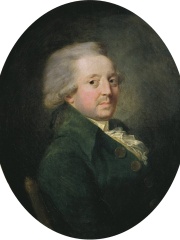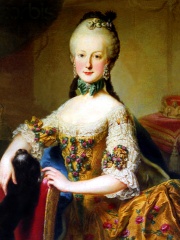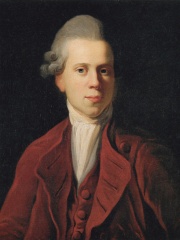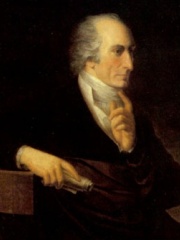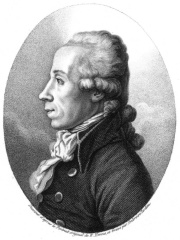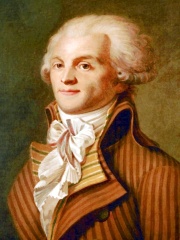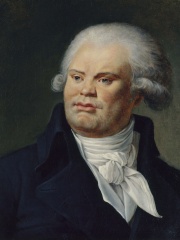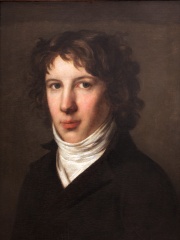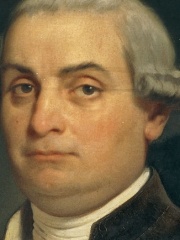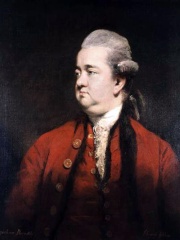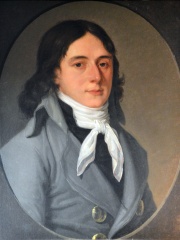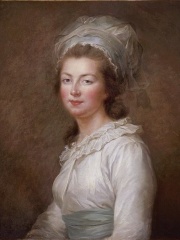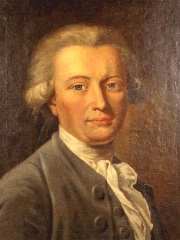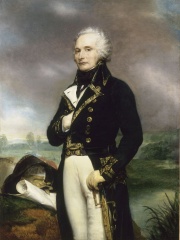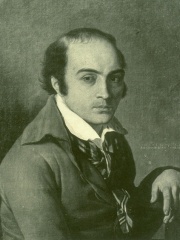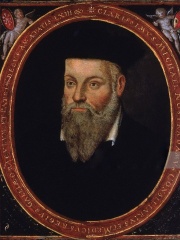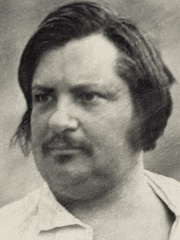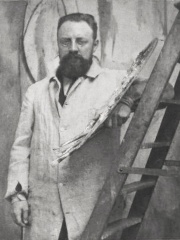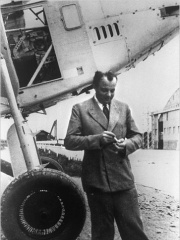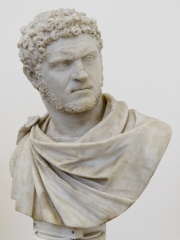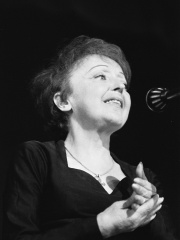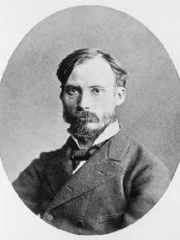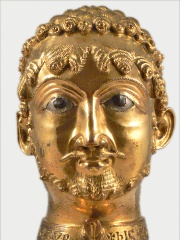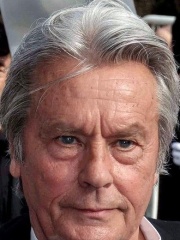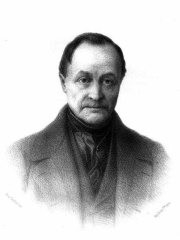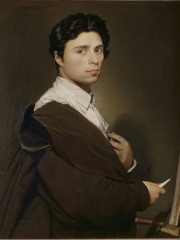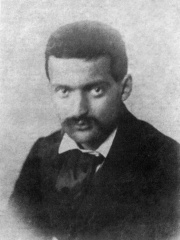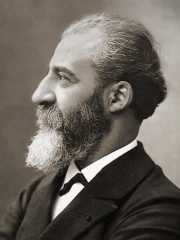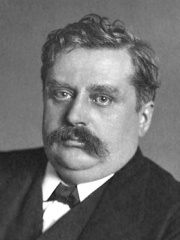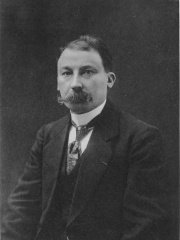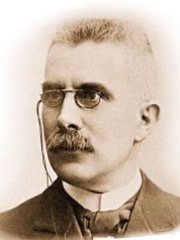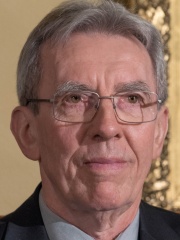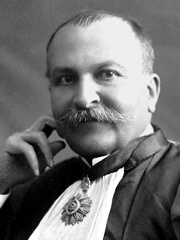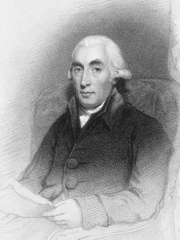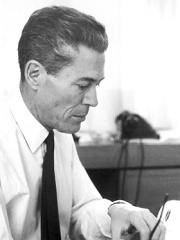CHEMIST
Antoine Lavoisier
1743 - 1794

 Antoine Lavoisier
Antoine Lavoisier
Antoine-Laurent de Lavoisier ( lə-VWAH-zee-ay; French: [ɑ̃twan lɔʁɑ̃ də lavwazje]; 26 August 1743 – 8 May 1794), also Antoine Lavoisier after the French Revolution, was a French nobleman and chemist who was central to the 18th-century chemical revolution and who had a large influence on both the history of chemistry and the history of biology. It is generally accepted that Lavoisier's great accomplishments in chemistry stem largely from his changing the science from a qualitative to a quantitative one. Lavoisier is noted for his discovery of the role oxygen plays in combustion, opposing the prior phlogiston theory of combustion. He named oxygen (1778), recognizing it as an element, and also recognized hydrogen as an element (1783). Read more on Wikipedia
His biography is available in 108 different languages on Wikipedia (up from 103 in 2024). Antoine Lavoisier is the 4th most popular chemist, the 27th most popular biography from France (down from 26th in 2019) and the 2nd most popular French Chemist.
Antoine Lavoisier is most famous for his work in chemistry. He discovered that water is made up of two parts hydrogen and one part oxygen. He also discovered the law of conservation of mass, which states that matter cannot be created or destroyed, only transformed.
Memorability Metrics
Page views of Antoine Lavoisier by language
Among CHEMISTS
Among chemists, Antoine Lavoisier ranks 4 out of 602. Before him are Louis Pasteur, Alfred Nobel, and Dmitri Mendeleev. After him are John Dalton, Jabir ibn Hayyan, Irène Joliot-Curie, Amedeo Avogadro, Joseph Louis Gay-Lussac, Robert Boyle, Jacobus Henricus van 't Hoff, and Emil Fischer.
Most Popular Chemists in Wikipedia
Go to all RankingsLouis Pasteur
1822 - 1895
HPI: 89.24
Rank: 1
Alfred Nobel
1833 - 1896
HPI: 88.86
Rank: 2
Dmitri Mendeleev
1834 - 1907
HPI: 86.92
Rank: 3
Antoine Lavoisier
1743 - 1794
HPI: 86.04
Rank: 4
John Dalton
1766 - 1844
HPI: 83.53
Rank: 5
Jabir ibn Hayyan
721 - 815
HPI: 82.30
Rank: 6
Irène Joliot-Curie
1897 - 1956
HPI: 82.18
Rank: 7
Amedeo Avogadro
1776 - 1856
HPI: 81.67
Rank: 8
Joseph Louis Gay-Lussac
1778 - 1850
HPI: 81.21
Rank: 9
Robert Boyle
1627 - 1691
HPI: 80.93
Rank: 10
Jacobus Henricus van 't Hoff
1852 - 1911
HPI: 80.83
Rank: 11
Emil Fischer
1852 - 1919
HPI: 80.82
Rank: 12
Contemporaries
Among people born in 1743, Antoine Lavoisier ranks 2. Before him is Thomas Jefferson. After him are Madame du Barry, Jean-Paul Marat, Luigi Boccherini, Alessandro Cagliostro, Toussaint Louverture, Marquis de Condorcet, Archduchess Maria Elisabeth of Austria, Nicolai Abildgaard, Friedrich Heinrich Jacobi, and Martin Heinrich Klaproth. Among people deceased in 1794, Antoine Lavoisier ranks 2. Before him is Maximilien Robespierre. After him are Georges Danton, Marquis de Condorcet, Louis Antoine de Saint-Just, Cesare Beccaria, Edward Gibbon, Camille Desmoulins, Élisabeth of France, Georg Forster, Alexandre de Beauharnais, and André Chénier.
Others Born in 1743
Go to all RankingsThomas Jefferson
POLITICIAN
1743 - 1826
HPI: 93.18
Rank: 1
Antoine Lavoisier
CHEMIST
1743 - 1794
HPI: 86.04
Rank: 2
Madame du Barry
COMPANION
1743 - 1793
HPI: 79.29
Rank: 3
Jean-Paul Marat
SOCIAL ACTIVIST
1743 - 1793
HPI: 79.05
Rank: 4
Luigi Boccherini
COMPOSER
1743 - 1805
HPI: 75.85
Rank: 5
Alessandro Cagliostro
OCCULTIST
1743 - 1795
HPI: 75.32
Rank: 6
Toussaint Louverture
SOCIAL ACTIVIST
1743 - 1803
HPI: 75.13
Rank: 7
Marquis de Condorcet
PHILOSOPHER
1743 - 1794
HPI: 75.06
Rank: 8
Archduchess Maria Elisabeth of Austria
POLITICIAN
1743 - 1808
HPI: 73.76
Rank: 9
Nicolai Abildgaard
PAINTER
1743 - 1809
HPI: 73.53
Rank: 10
Friedrich Heinrich Jacobi
PHILOSOPHER
1743 - 1819
HPI: 72.77
Rank: 11
Martin Heinrich Klaproth
CHEMIST
1743 - 1817
HPI: 71.51
Rank: 12
Others Deceased in 1794
Go to all RankingsMaximilien Robespierre
POLITICIAN
1758 - 1794
HPI: 87.37
Rank: 1
Antoine Lavoisier
CHEMIST
1743 - 1794
HPI: 86.04
Rank: 2
Georges Danton
POLITICIAN
1759 - 1794
HPI: 79.12
Rank: 3
Marquis de Condorcet
PHILOSOPHER
1743 - 1794
HPI: 75.06
Rank: 4
Louis Antoine de Saint-Just
POLITICIAN
1767 - 1794
HPI: 75.01
Rank: 5
Cesare Beccaria
PHILOSOPHER
1738 - 1794
HPI: 74.89
Rank: 6
Edward Gibbon
HISTORIAN
1737 - 1794
HPI: 74.44
Rank: 7
Camille Desmoulins
POLITICIAN
1760 - 1794
HPI: 73.53
Rank: 8
Élisabeth of France
NOBLEMAN
1764 - 1794
HPI: 72.41
Rank: 9
Georg Forster
BIOLOGIST
1754 - 1794
HPI: 72.07
Rank: 10
Alexandre de Beauharnais
MILITARY PERSONNEL
1760 - 1794
HPI: 72.02
Rank: 11
André Chénier
WRITER
1762 - 1794
HPI: 71.30
Rank: 12
In France
Among people born in France, Antoine Lavoisier ranks 27 out of 6,770. Before him are Nostradamus (1503), Honoré de Balzac (1799), Henri Matisse (1869), Antoine de Saint-Exupéry (1900), Caracalla (188), and Édith Piaf (1915). After him are Pierre-Auguste Renoir (1841), Frederick I, Holy Roman Emperor (1122), Alain Delon (1935), Auguste Comte (1798), Jean-Auguste-Dominique Ingres (1780), and Paul Cézanne (1839).
Others born in France
Go to all RankingsNostradamus
OCCULTIST
1503 - 1566
HPI: 86.64
Rank: 21
Honoré de Balzac
WRITER
1799 - 1850
HPI: 86.38
Rank: 22
Henri Matisse
PAINTER
1869 - 1954
HPI: 86.28
Rank: 23
Antoine de Saint-Exupéry
WRITER
1900 - 1944
HPI: 86.21
Rank: 24
Caracalla
POLITICIAN
188 - 217
HPI: 86.14
Rank: 25
Édith Piaf
SINGER
1915 - 1963
HPI: 86.11
Rank: 26
Antoine Lavoisier
CHEMIST
1743 - 1794
HPI: 86.04
Rank: 27
Pierre-Auguste Renoir
PAINTER
1841 - 1919
HPI: 86.02
Rank: 28
Frederick I, Holy Roman Emperor
POLITICIAN
1122 - 1190
HPI: 85.83
Rank: 29
Alain Delon
ACTOR
1935 - 2024
HPI: 85.79
Rank: 30
Auguste Comte
PHILOSOPHER
1798 - 1857
HPI: 85.43
Rank: 31
Jean-Auguste-Dominique Ingres
PAINTER
1780 - 1867
HPI: 85.42
Rank: 32
Paul Cézanne
PAINTER
1839 - 1906
HPI: 85.32
Rank: 33
Among CHEMISTS In France
Among chemists born in France, Antoine Lavoisier ranks 2. Before him are Louis Pasteur (1822). After him are Irène Joliot-Curie (1897), Joseph Louis Gay-Lussac (1778), Henri Moissan (1852), Alfred Werner (1866), Victor Grignard (1871), Henry Louis Le Chatelier (1850), Jean-Pierre Sauvage (1944), Paul Sabatier (1854), Joseph Black (1728), and Jacques Monod (1910).
Louis Pasteur
1822 - 1895
HPI: 89.24
Rank: 1
Antoine Lavoisier
1743 - 1794
HPI: 86.04
Rank: 2
Irène Joliot-Curie
1897 - 1956
HPI: 82.18
Rank: 3
Joseph Louis Gay-Lussac
1778 - 1850
HPI: 81.21
Rank: 4
Henri Moissan
1852 - 1907
HPI: 77.69
Rank: 5
Alfred Werner
1866 - 1919
HPI: 76.62
Rank: 6
Victor Grignard
1871 - 1935
HPI: 76.41
Rank: 7
Henry Louis Le Chatelier
1850 - 1936
HPI: 76.20
Rank: 8
Jean-Pierre Sauvage
1944 - Present
HPI: 74.92
Rank: 9
Paul Sabatier
1854 - 1941
HPI: 74.85
Rank: 10
Joseph Black
1728 - 1799
HPI: 73.50
Rank: 11
Jacques Monod
1910 - 1976
HPI: 73.24
Rank: 12
